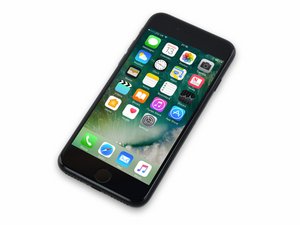Distorted display, colored lines in LCD even after replacement.
Got a tricky one here.
Customer brought in an iPhone 7 that was dropped a few months back which caused the glass to break around the home button. The customer says that the phone has been working fine up until yesterday morning when he woke up and the display was distorted with multicolored lines over the display. This screen distortion would flash in and out. Meaning, the distortion would appear over the screen for several seconds and then return to a perfectly normal display and then back to the distortion and repeat ad nauseum.
The distortion begins as soon as you turn the phone on. You see the Apple logo and the display is fine and a few moments later, half of the screen will distort for a few moments and then return to the normal Apple logo boot up screen where it continues to randomly distort throughout the use of the phone, always returning back to a normal display for a seemingly random amount of time before it distorts again.
He brought it into my shop and seeing the damage to the display around the home button and the distorted display, I figured this was another typical screen replacement job. Wrong. So far, I have:
- Replaced the LCD. Twice. The distortion continues on both new displays.
- Tried connecting the displays without the front camera flex cable - no effect.
- DFU mode restore on iOS 11.3 - no effect.
- Removed logic board and examined the components under a microscope to see if I could see any obvious damage like knocked off components from when he dropped it, etc. - Saw none.
Kind of at a loss of where to go next. I'm somewhat experienced with troubleshooting and repairing board-level components usually with things like back-light coils, diodes, and even a touch IC once or twice. Any advice on where to go from here?
Attaching photos and videos.


[UPDATE: 4/14/18:] - Additional Notes. -
- I have noticed that the distortion does not take place while anywhere in the Settings app. I can freely move anywhere within the Settings app for as long as I please and this distortion will not appear. As soon as I leave the Settings app however, it resumes almost immediately
- Measured FL3903, FL3901, and FL3902 in diode mode and all appeared to be in good working order.
- Measured each pin of J4502 in diode mode and found several pins to read 0L including Pin 5, Pin 6 and others. I believe this may point to a Chestnut IC related problem, but I am not sure. I have advised the customer that replacing his phone might be the quickest, cheapest option since a refurb. iPhone 7 goes for $369. Posting what I found in case it helps someone else track down the fix.
Это хороший вопрос?

 6
6  9
9 
 806
806